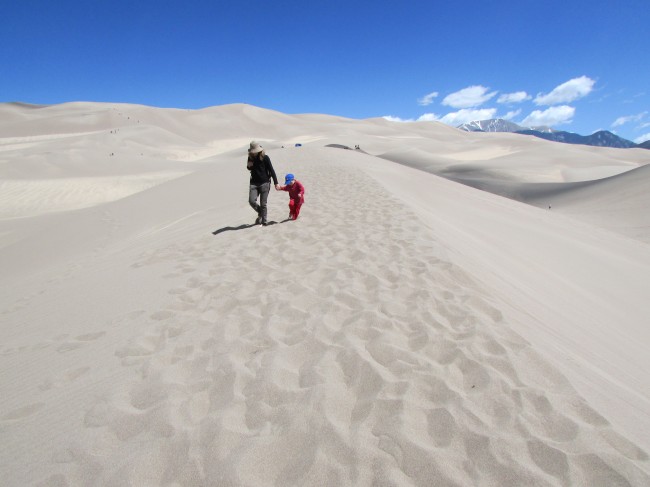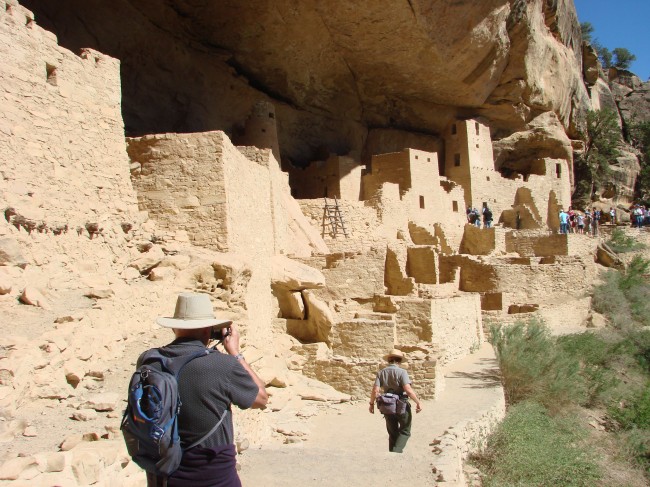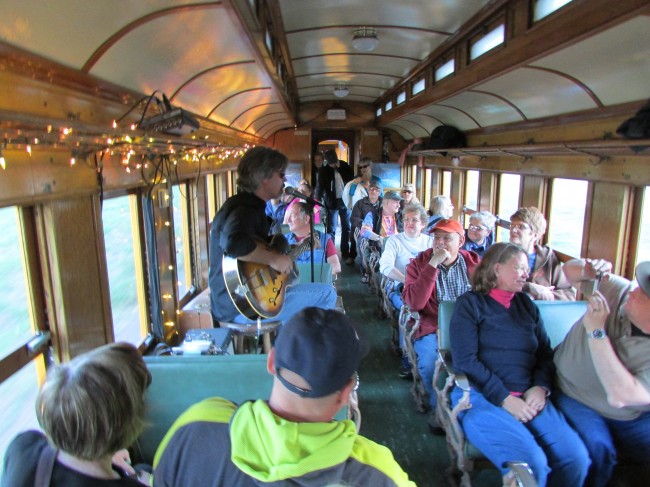The Canada Geese seemed to acknowledge our presence. As a group of us, all Canadians, began our whitewater raft adventure from the small central Colorado town of Buena Vista, a flock of the large, noisy birds paddled beside us in the calm water, as if wishing us luck for the super soaking to come.
World class white water rafting is big business in this area where the swift-flowing Arkansas River offers adrenalin-charged Class 3 and 4 rapids, a particular challenge for novices like us. But, with an expert guide in the back, we bounced around in the large, inflatable rafts, paddling like mad through rapids with names like Zoom Flume and Pinball and getting very, very wet. We all emerged with smiles on our faces.
Colorado is an immense state (8th largest in the US) with four national parks, 41 state parks and more than 50 mountains that soar more than 4000 metres above sea level. Outdoor adventure is a key part of most visitors’ experience. One can even ski and golf on the same day.
First stop for us was the Mile-High City, Denver. The city itself has a population of 600,000 but the metropolitan area holds more than 2 ½ million. Founded in 1858 where gold was first discovered, the Colorado capital is the most isolated large city in North America, more than 1,000 kilometres from any other significant community. Perhaps that’s why the city boasts 26 breweries and the 2nd largest performing arts centre in the US!
Denver architecture is imaginative and stunning, partly because a percentage of construction costs have to go towards artistic works. The most striking example is the Convention Centre where a huge Blue Bear, more than 12 metres high, is standing outside, appearing to be gazing into the foyer. Startling and whimsical.
Parks and bike trails abound in Denver. In fact, along Cherry Creek (where gold was first found) there are 60 kilometres of bike paths with several bike rental stations. In spite of the thin air that leaves people a little breathless, everyone seems to exercise.
Leaving Denver, it doesn’t take long to become enchanted by the natural beauty of the state. Just south of the capital is the Garden of the Gods, a series of soaring sandstone rock formations, some as high as 92 metres, against a background of blue skies and the stunning, snow-caped Pikes Peak. The park is filled with hikers and many brave souls climbing the almost vertical columns. The nearby community of Manitou Springs is famous for its endless supply of free soda water. Fountains throughout the town flow with naturally carbonated spring water that pushes upwards from ancient aquifers.
The most amazing natural phenomenon we saw in Colorado was Great Sand Dunes National Park. When approached from the barren and arid landscape, it looks like huge mountains of sand deposited in waves by massive front end loaders. The dunes, the tallest in North America, rise 230 metres from the floor of the San Luis Valley. Covering 7700 hectares, the dunes were formed eons ago by westerly winds picking up sand particles from the flood plains of the Rio Grande and its tributaries and depositing them as the wind lost power at the base of a nearby mountain range. The process continues to this day and the dunes are constantly changing. Visitors are welcome to climb the giant hills of sand and many of them get thrills and spills from sand boarding and sand sledding.
The most spectacular man-made attraction we experienced was in another of Colorado’s spectacular National Parks. Mesa Verde has over 4,000 archeological sites and more than 600 remarkable cliff dwellings made by the Ancestral Puebloan people between 1190 and 1300 A.D. Built for protection in cliffside caves and under rock outcroppings, but abandoned 700 years ago, the mud and stone buildings can be visited in groups led by Park Rangers. Steep stairs and ladders must be navigated but the effort is well worth it.
On our last night in Colorado we were ready for some knee-slapping entertainment and Durango delivered. We were fortunate to be in this traditional Western town of 17,000 for the 2nd annual Durango Blues Train. Passengers board the historic Durango & Silverton coal-fired, steam-driven train for a three hour ride through the canyons of San Juan National Forest. Each century-old coach had a professional band, group or solo performer belting out the blues as we rumbled along the narrow-gauge railroad. It was great fun to wander between the coaches, enjoying the scenery and rollicking music. At the bottom of the canyon, the Animas River tumbled through foaming rapids, ready for tomorrow’s whitewater rafting. The noise of the steam engine must have frightened the birds. There wasn’t a Canada Goose in sight.
Photo Credits
Garden of the Gods – Wikimedia Creative Commons
All other photos by John and Sandra Nowlan – All Rights Reserved







Please Share Your Thoughts - Leave A Comment!